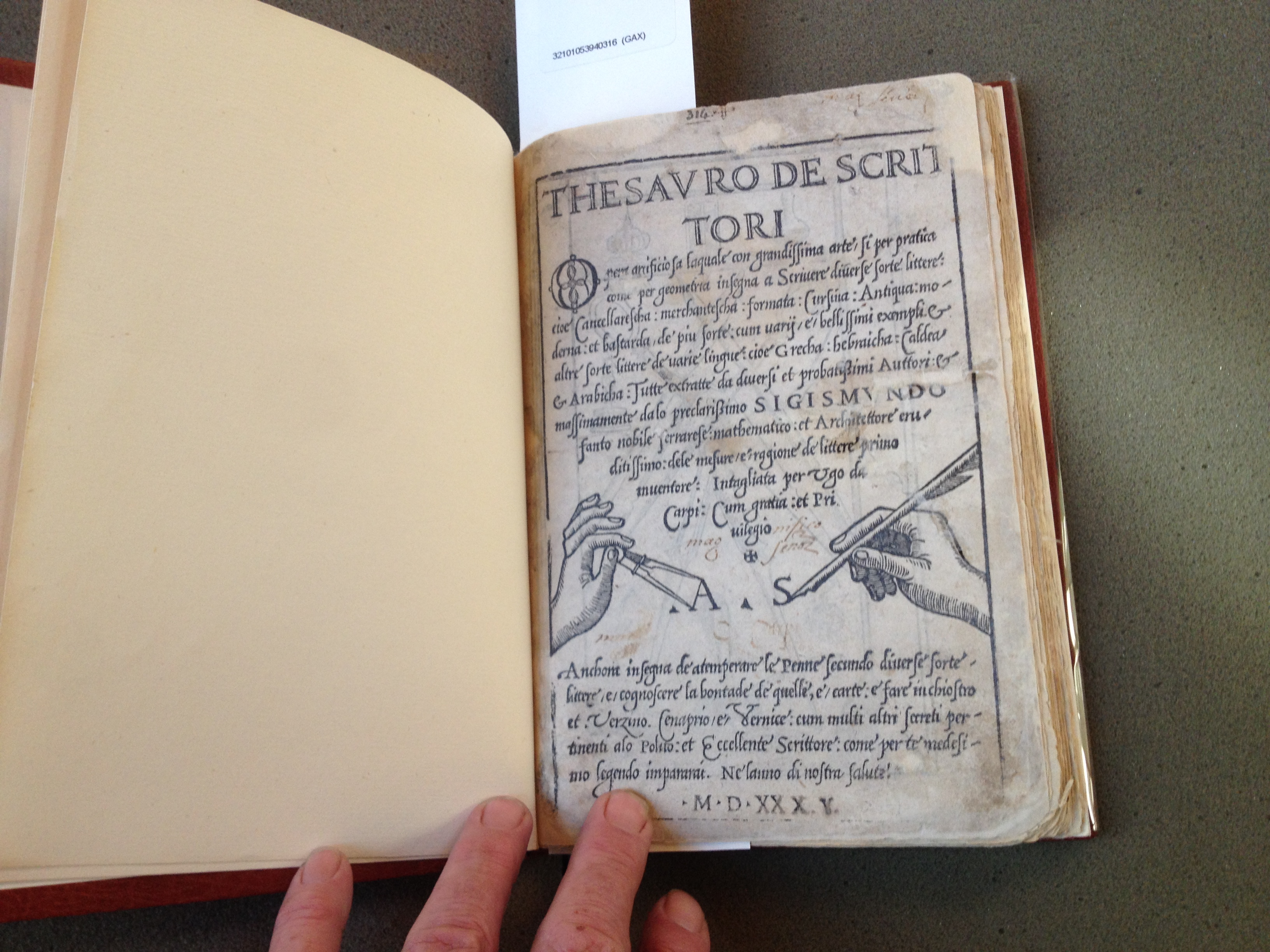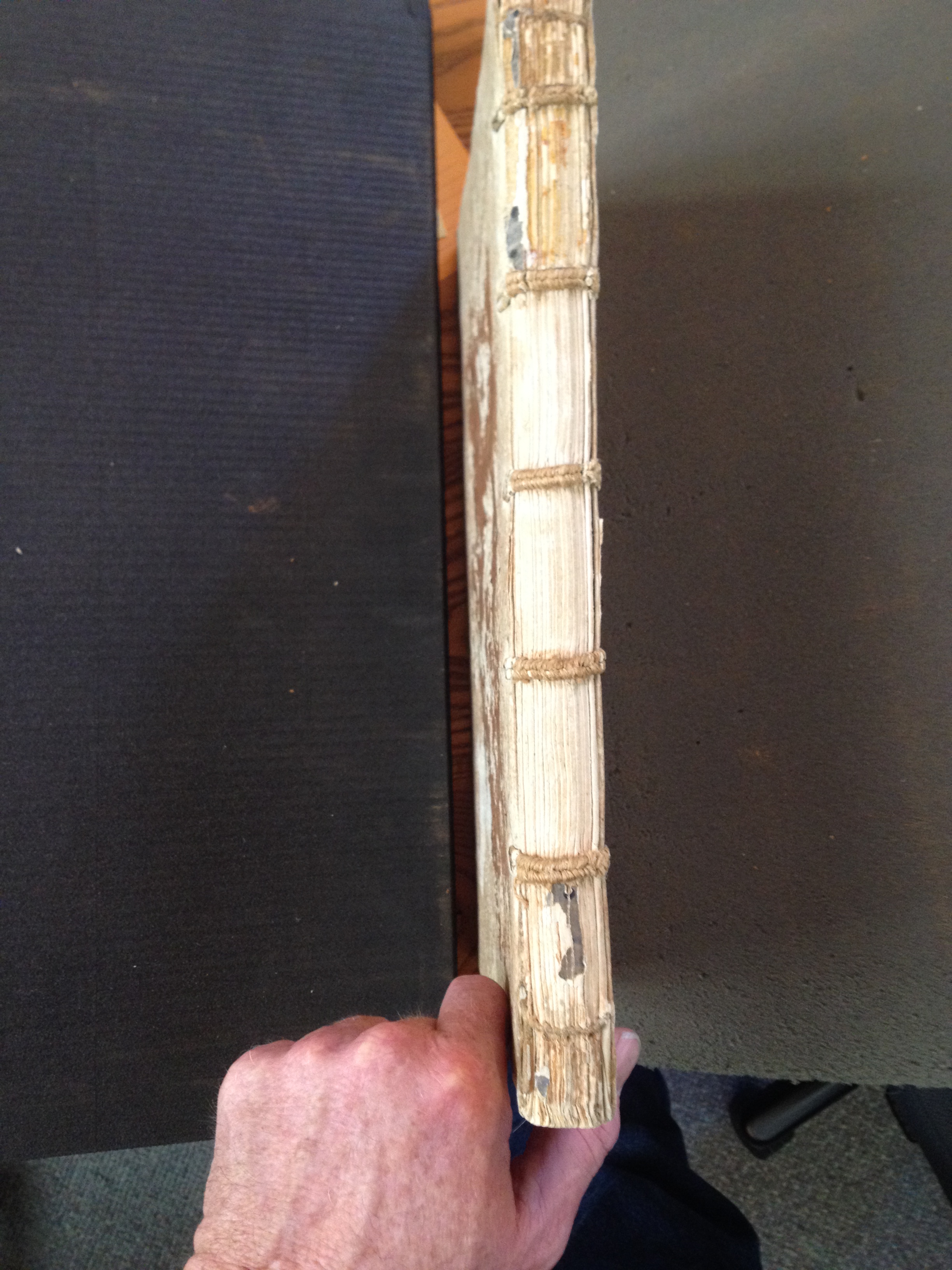Princeton's Rare Books and Special Collections
I called up twenty three items and spent two happy days in the reading room of Princeton's Firestone Library.
There are ten separate collections in the Rare Book and Special Collections Division. While the reading room serves these collections, a researcher is dealing with 10 catalogs. Princeton makes it easy to search with its integrated catalog, but there are subtleties to the presentation and cataloging. My research before visiting showed that there were books that would be of interest, but I didn't have a good idea of their holdings as searching a catalog by title is not an efficient way to do research.
For a specific title, I used WordCat, noting what libraries might have it. This is an inefficient way of finding things as WorldCat is not always up to date or accurate. So, I missed a number of books at libraries along the way. I had no illusion that this trip would net a complete survey, but it was frustrating to come back and realize that I passed by institutions that held a book of interest.
When I arrived at Princeton, I took some time with their online catalog to fill out call slips. The newly renovated reading room is well lit, with large windows that give the room a cathedral-like feel. Coming in and sitting down to look at material, there was no doubt that I was in a research library and not some open-plan office complex.
The Graphic Arts 1535 copy of Ugo da Carpi's Thesauro de scrittori was rebound in recent years. I had seen two copies (1525 and 1535) of this book at the Harry Ransom Center, and again at the Newberry (1535). WorldCat does the Texas or Princeton copies, thus creating another "hidden book" in two different libraries. A.S. Osley's The variant issues of Ugo da Carpi's T'hesauro de scrittori published in Quaerendo details the changes made in this early writing manual. That da Carpi borrowed freely from Fanti, Arrighi, and Tagliente is well known, and Osley's article from 1972 delineates typesetting and plate order changes in the three dates the book was issued: 1525, 1532 and 1535.

His description is so detailed that the Graphic Arts cataloger was able to determine which issue ("Designated as "first issue" of this edition in Osley, ...") they own.
Should you wish to travel down a bibliographic side alley, read his Quarendo article, and try to keep in mind which issues you've seen at any given institution. It's a bit much to keep straight in one's head.

da Carpi wasn't the only book on my list, so I moved on to Albrecht Dürer's geometry book with a section on constructed capitals. Princeton's copy of Albertus Durerus Nurembergensis pictor huius ... is in good shape, sewn on split thongs, laced onto pasteboards. The covering material has been lost, but the book is still intact. This copy was owned by Stanley Morison, whose research and opinions dominate the field of writing manuals, type design, and history of printing.

Dürer first published his book in 1525 at a time when writing manuals were just beginning to be published. Italian writing masters teach scribes how to write with a quill pen. Ugo da Carpi's book is mostly a compendium of instruction by other writing masters while Dürer's book includes geometric Roman capitals that would be used for inscriptional purposes. There are constructed gothic and rotunda minuscules in da Carpi's work, but no capitals. The instructions that Dürer gives on how to make the Roman capitals is not strictly a writing manual, but it involves instructions on how to construct these forms using a compass and a square. Dürer's instructions are familiar today in the book Of the Just Shaping of Letters.
